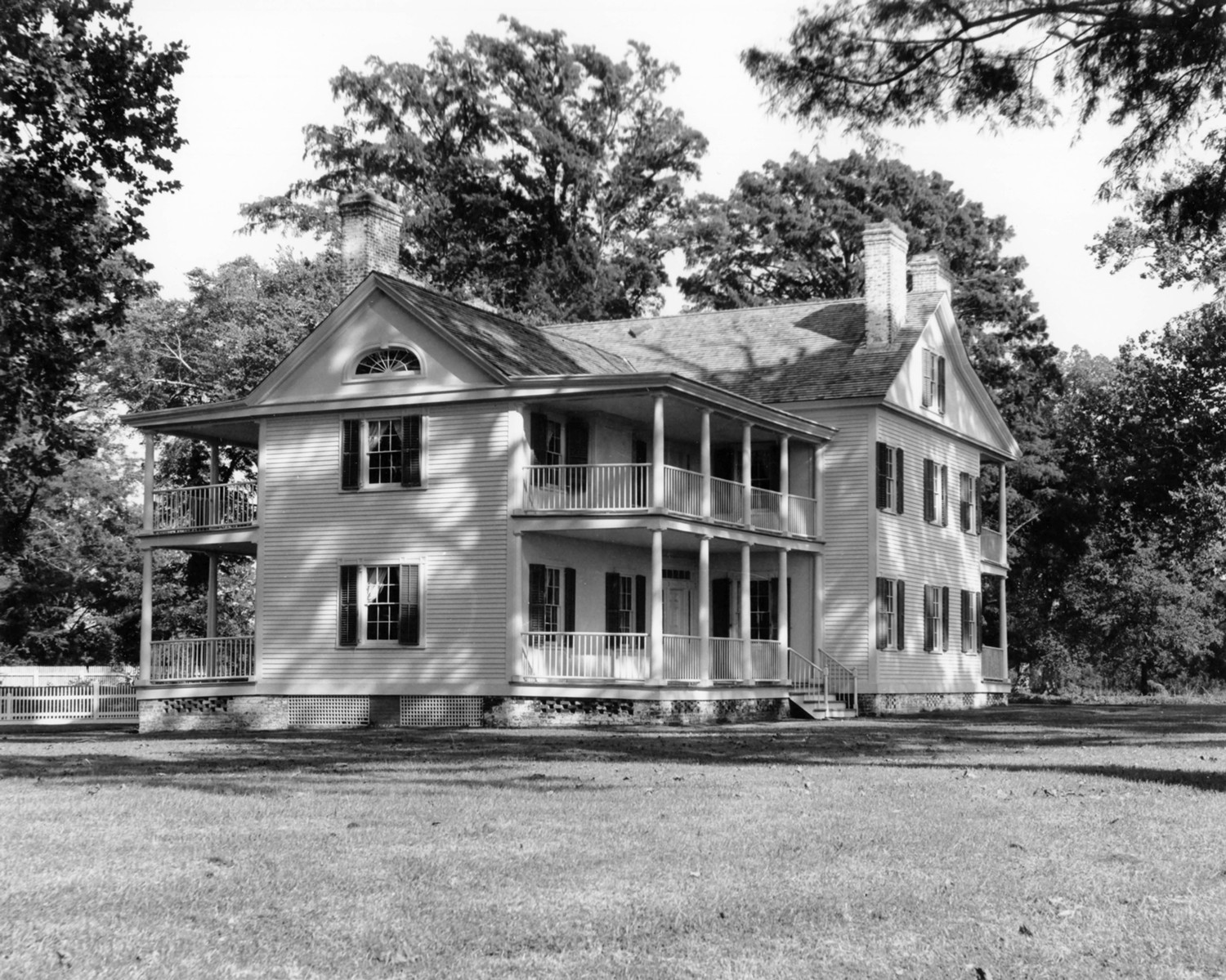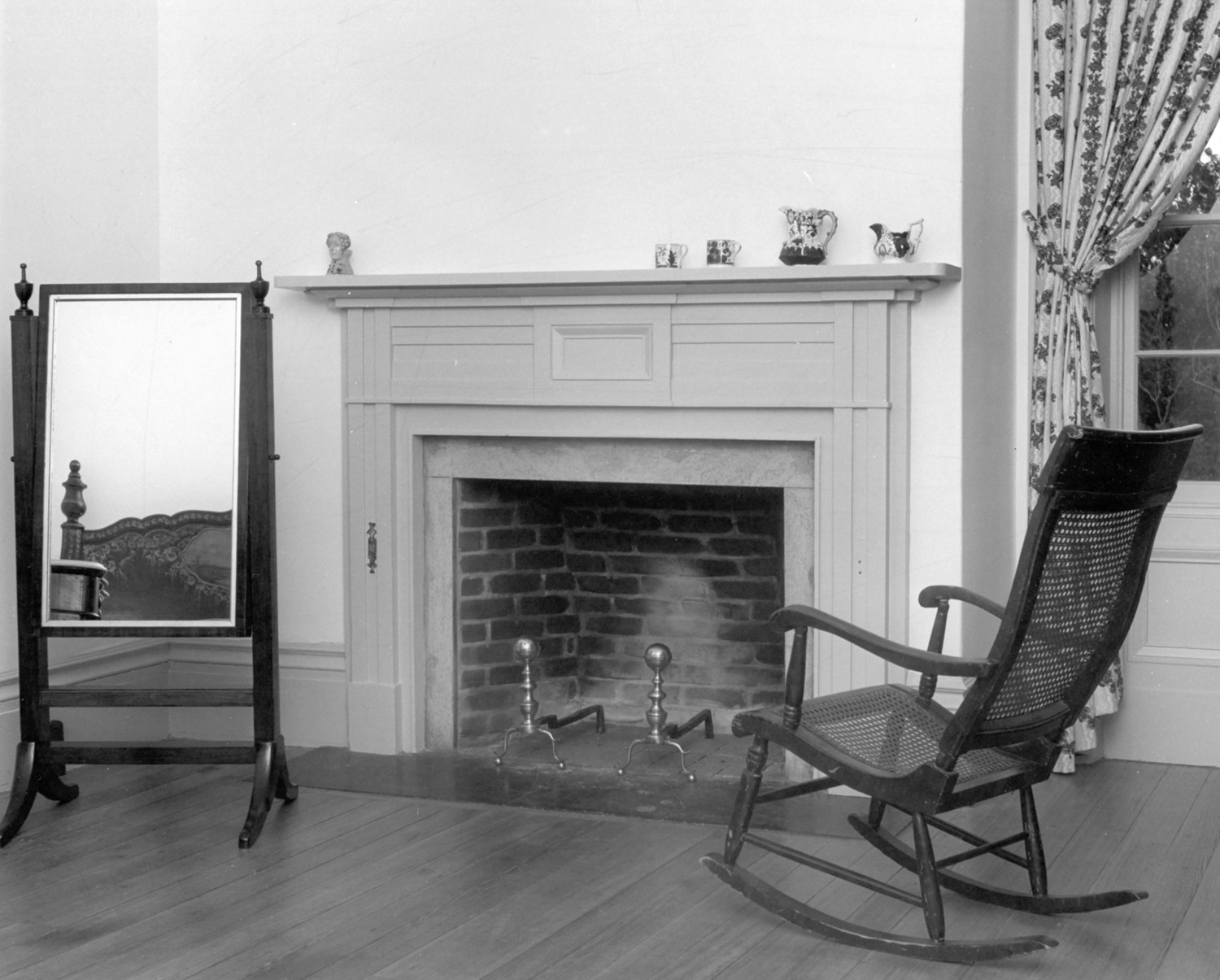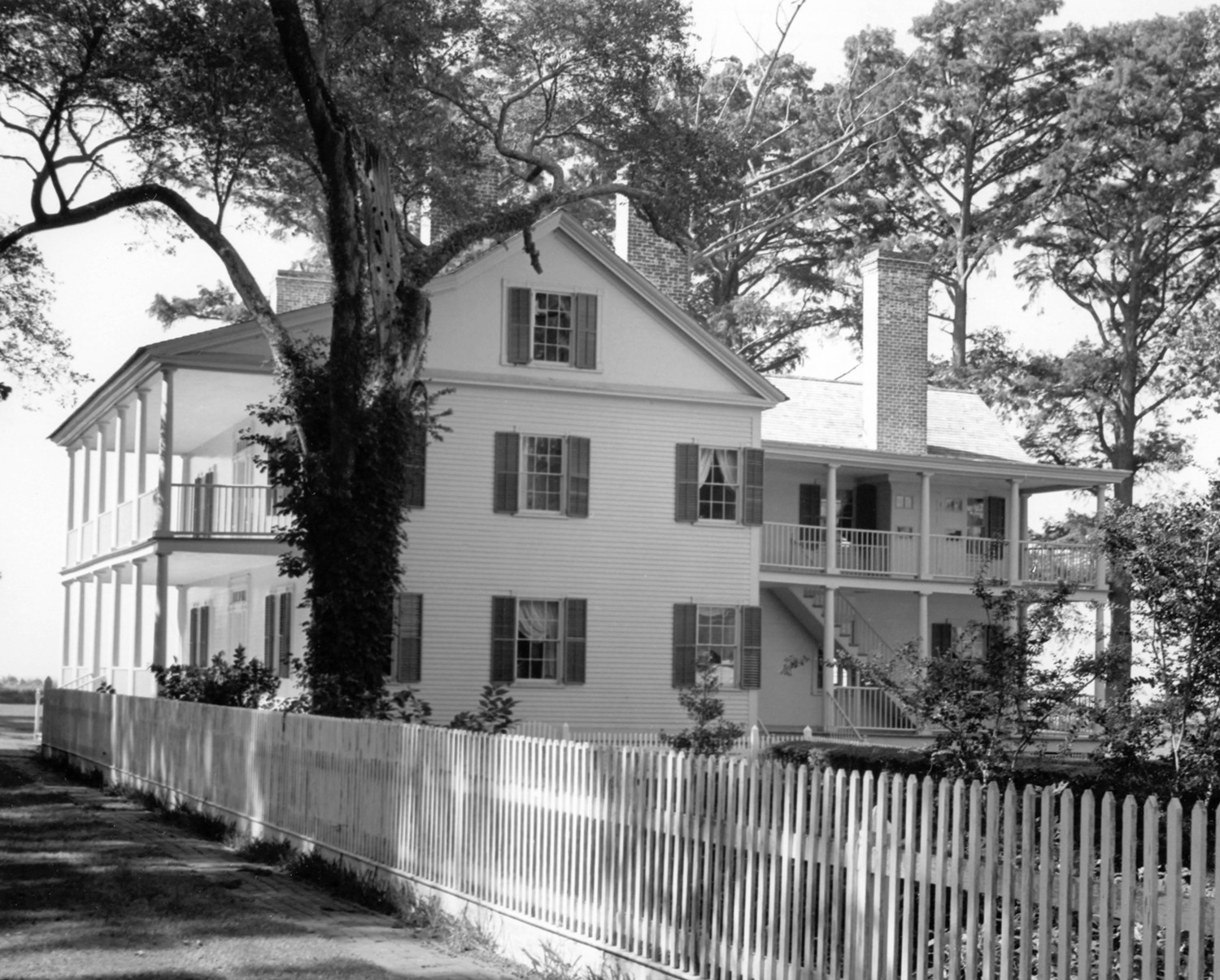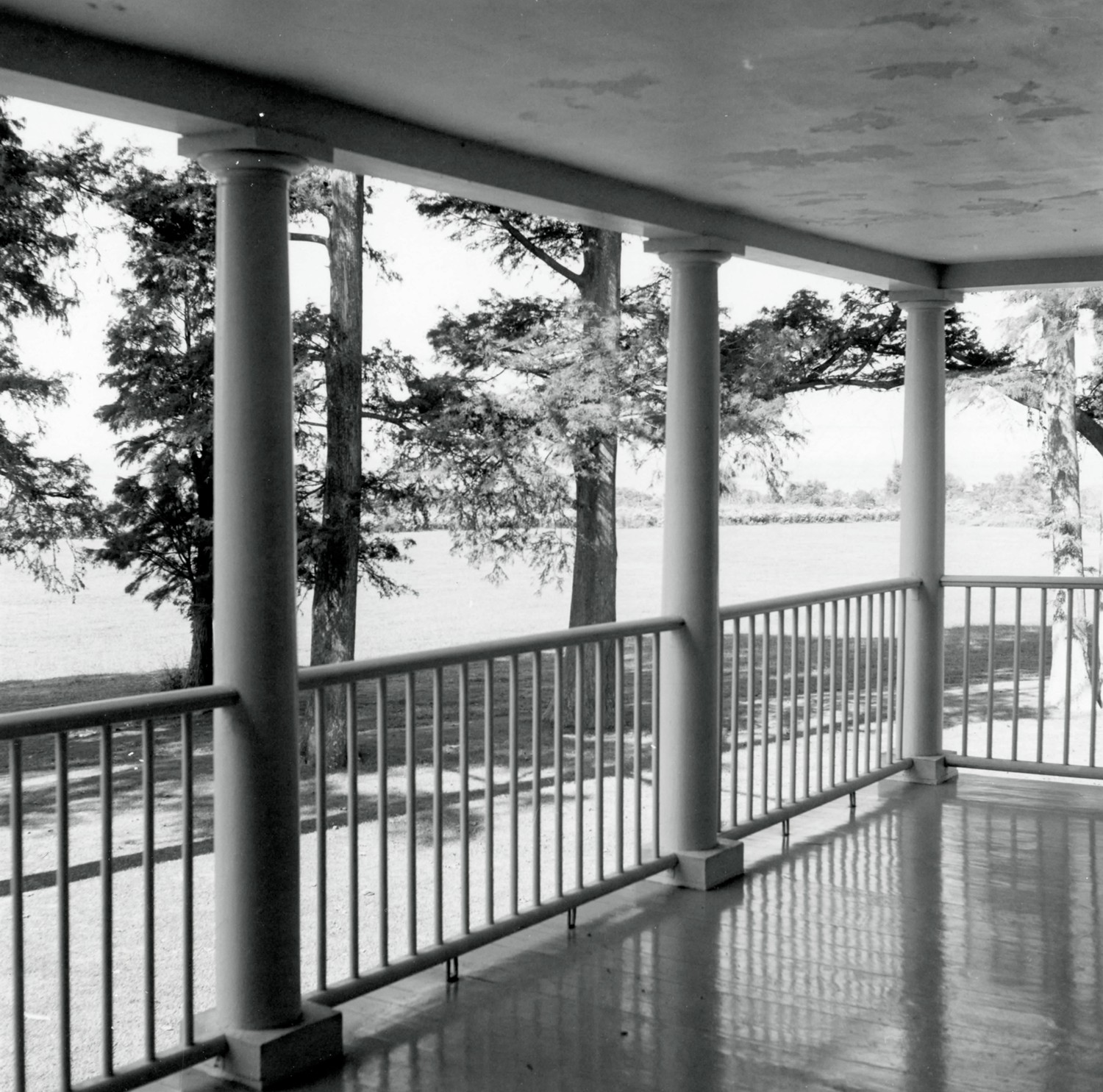Somerset Place Plantation, Creswell North Carolina

Somerset Place was one of the most significant antebellum plantations in North Carolina. Located on Lake Phelps, near the Scuppernong River, the plantation at the height of its development, comprised several thousand acres of arable land, grist and saw mills, abundant labor supply, and vast fields of corn, its main crop.
The history of the Somerset Place site began with the discovery of Lake Phelps in 1755 by Josiah Phelps and Benjamin Tarkinton, local hunters. The body of water lay amidst a vast, forbidding swamp, considered, at the time to be useless for human habitation. It was not until the 1780s that plans were developed for the exploitation of the region. In 1784, three Edenton businessmen; Josiah Collins, Dr. Luther Dickinson, and Major Nathaniel Allen, formed a partnership "to enter and secure a large body of land around and bordering upon Lake Phelps. . ." and as those lands were generally swamp and covered with water during several months of the year, it was agreed that the company should cut a canal from the Scuppernong River to the Lake, to drain the lands, and to render them fit for culture and improvement. By 1785, the new association, known as the "Lake Company," had acquired over one thousand acres of land and prepared to dig the canal between the Lake and the Scuppernong River. Since the land was at a higher elevation than the river, water flowing through the canal could be used as a source of water power, and it would also serve as a means of transport to and from the plantations on the lake and the river. When completed in 1788, the canal was six miles long, twenty feet wide, and from four to six feet deep. By 1794 the Lake Company had completed extensive improvements on the plantation bordering Lake Phelps. Saw and grist mills and a machine for processing rice had been built on the canal; land was cleared and crops of rice raised; a warehouse, barn, and dwelling houses for overseers and slaves had been built. The entire venture was a definite success. In 1812, the North Carolina historian Hugh Williamson noted the significance of the development in his History of North Carolina: "By finishing the canal, and erecting three or four mills, that are turned by the waters of the lake, and by raising a few crops of rice and wheat, they have shown that lands formerly of little value, may be made the most profitable lands in the state. The rice produced on these lands is not exceeded in quality by rice in Georgia or South Carolina." After 1790 Josiah Collins worked actively to acquire the holdings in the Lake Company from his partners, a process he completed in 1816. In that year he named his estate Somerset Place, after his native English county, to commemorate the total acquisition of his plantation. After Josiah's death in 1819, his son Josiah, Jr., continued to develop Somerset Place.
In 1820, Willie P. Mangum, during a visit to the plantation, noted that, "Here is the finest estate in North Carolina. . .thousands of acres of ane one body as rich as the banks of the Nile, a canal. . .emptying the waters of the lake in Scuppernong River. . .On the canal there is the greatest variety of useful and ingenious machinery that I have ever seen." Shortly after 1830 Josiah Collins III took over the management of Somerset Place plantation from his father. His decision to actually live at Lake Phelps on a full-time basis, rather than in Edenton as his father and grandfather had done, resulted in extensive development of the plantation. In 1829 Josiah III had married Mary Riggs of New Jersey, and for a time the couple lived in the Colony House, a four-room dwelling at Somerset Place. During this time, construction was begun on a fourteen-room Mansion House on the site. With its completion, Somerset Place quickly became a social center in addition to its agricultural role. And, the hospitality of the Collins family soon became legendary throughout North Carolina. From 1830 until the Civil War Josiah Collins III continued to develop Somerset Place. The plantation became a leading producer of corn in North Carolina, and a model of a self-sufficient productive plantation. With the coming of the Civil War, however, the Collins family fled to Hillsborough where Josiah III died. During the war years, the plantation began to decline due to the inattention of its owner, and after the war, despite attempts by members of the Collins family to revive the estate, Somerset Place had to be sold to satisfy creditors. Somerset Place changed hands several times after 1870, and in the 1930s the plantation and adjoining farms were purchased by the federal government for the Scuppernong Farms Resettlement Project. In 1939, a part of this land became Pettigrew State Park, named for the Confederate general who owned "Bonarva," a plantation adjoining Somerset. In the early 1950s, a program of research, archaeology, and restoration was begun on Somerset's mansion house and the several extant dependencies. In 1967 responsibility for Somerset Place was transferred to the State Department of Archives and History. Interior restoration and furnishing of the Mansion House was completed in 1969, and a long-term program of restoration and furnishing of the extant outbuildings was undertaken.
Architecturally, Somerset Place is significant as one of two places of its type in North Carolina which reflects a further development of the "double-pile" and T-shaped house plan. And, the transition between the full-length, one-story veranda on a two-story house (with a shed to balance in the rear), to the great two-story colonnaded portico that is the final phase in the evolution of the porch in North Carolina. The delicate porches on the Mansion House also give a strong Bahamian character to the exterior of the structure. As such, Somerset Place is one of the best extant examples of coastal plantation houses of its period.
Site Description
The Somerset Place Mansion House is a two-and-one-half-story frame structure constructed of heart cypress. The house is almost entirely surrounded (except on the gable ends) by full-length porches raised to two stories on the front and against the two sides of the rear wing. The three double-decked porch colonnades give a strong overall Bahamian character to the exterior. The facade of the main section is five bays in width, the entrance doors on the front and south sides of the rear wing have side lights, and all windows are six over six in configuration. The main section of the house measures 31' x 53' and the rear wing is 22' x 29'.
The exterior of the mansion house is painted in cream yellow with light ocher on the porch, floors, and steps. The blinds are all painted greyish-blue. The roof is covered with cypress shakes.
The Somerset Place Mansion House has a double depth of rooms in the main section, with a central hall which is connected to a cross hall at the rear of the main rooms, forming together a T-plan. The rear hall has a door at each extremity, these lead to the secluded side porches which flank the rooms in the rear wing. The stair is in its usual place in a T-plan hall. The interior of the plantation house features woodwork and trim in the style of the early Greek Revival. Heat was furnished by ten fireplaces, serviced by five interior chimneys, two in each end of the main house and one in the north side of the rear wing. The interior walls are smooth plaster finish, all painted oyster white.
On the first floor, the broad central hall is divided by a segmental Greek Revival style arch supported in part by four fluted half-columns. The major rooms in the front of the main section are the Parlor and the Office and to the rear the Library and Butler's Pantry. The Dining Room is in the rear wing on the first floor. The fireplace mantles in the Office, Parlor, Library, and Dining Room are of imported gray and black Italian marble all in a very plain style. The second floor is a duplicate of the lower floor in arrangement; however, the ornamentation is Simpler. The mantels in the five bedrooms are wood instead of marble as on the first floor.
On the third floor, there is a large children's bedroom in the south half of the main section, a hallway and bedroom comprise the north half, and in the wing there is a servant's bedroom.
The Mansion House is one of twenty buildings that originally formed a village around a four-acre garden. (Near the mansion is the Colony House, originally the main house, later used for the tutor, ministers sons of the family. The building is a plain two-story frame structure measuring 20' x 35', there are two rooms on each floor with a small entrance hall and central stairway. The Colony House also has two interior chimneys with four fireplaces. Also surrounding the Mansion House are several extant dependencies including a kitchen, laundry, dairy, smokehouse, and an ice house. All are frame structures constructed of heart cypress, and painted on the exterior as the Mansion House. Still visible are the foundations of the wash house, wood house, storehouse, hospital, slave quarters, rations storage, and overseers house.

Southwest corner (1969)

House (1969)

Main section (1969)

Mantel (1969)

Side view (1969)

Porch detail (1969)

Entry hall (1969)

Third floor (1969)

Window third floor (1969)

Colony House (1969)











